Posts Tagged ‘Regional arts’
Regional Selfies: Communities and Self-Documentation
Through documentary photography and social media Victoria Cooper and Doug Spowart have explored connections with Place in urban and regional communities in Queensland, New South Wales and Victoria. The purpose of these Nocturne Projects is to capture everyday scenes of each community in nocturnal light, dusk and dawn. These images are then posted on a Nocturne project Facebook page to evoke stories, memories and shared experiences from the community.
In each project Spowart and Cooper found different ways to include community participation. In 2014, they were invited to work in Miles, a major town of the Western Downs Region of Queensland. The Nocturne Miles Community Documentary project sought to engage with the broader public to undertake self-documentation projects and skill development in nocturne photography. Both local and temporary residents who enjoy taking photos, as well as those more skilled in photography were all invited to participate. After an initial workshop, Spowart and Cooper mentored the 18 participants to create images for the project including self-portraits and daily assignments and produce Facebook reports and a zine.
To begin the project consultations were undertaken with staff from the Western Downs Regional Council’s Cultural Development team Ashleigh Campbell and Anne Keam at Dogwood Crossing to refine the project to match the needs of their community. Then centre staff sought out members of the community who could be interested in the project. Possible candidates then completed an Expressions of Interest form to provide some information on their experience and the photography tools they had access to e.g. DSLR camera, point and shoot camera, mobile phone or tablet cameras. Another important consideration was that the applicants were going to be in the region during the project to participate in briefings, workshops and shootouts as well as the final day’s zine making activity.
While numbers were limited there was a desire by the artists and Dogwood Crossing that the project accessible to as many participants and be as inclusive as possible. The one proviso was that project participants needed to live and/or work in or near Miles including the smaller surrounding towns or on properties/work camps in the Miles district.
The participants engaged with the project in a variety of different ways including:
- An initial introduction to the project and skill development workshop;
- Guided evening photography shoot-outs in the main Street of Miles as well as at the Miles Historic Village;
- Daily photo tasks over the week of the project assigned through a project Facebook group;
- Optional mentoring sessions, where required, to enable images to be prepared and uploaded for the project;
- Display of participants photos to a digital screen at Dogwood Crossing; and
- A practical ‘zine’ making workshop.
The project began on Sunday November 30 with an introductory workshop, briefing and a shootout. Progressively images were collated and uploaded to the Nocturne Miles Community Facebook page. Each day a new topic was presented a challenge and their interpretation formed into a photocollage. Communication with the participants was made through a private Facebook group page that enabled hear 24hour contact with participants and Cooper+Spowart. Some participants came into Dogwood Crossing with their photos or with requests for support in making and/or optimising better photographs. On Wednesday evening special access was provided to the Miles Historical Village for group to experiment with ‘painting with light’ and ‘projection’ techniques.
Cooper and Spowart added their images to the Facebook page as well and some visitors to the page posted stories about the places pictured. By the project’s end the page had 241 Page Likes, 60 Posts and the Total Reach was 17,771. Both the group page and the community page are still active.
Some of the photocollages that formed the 8 page Zines that were made using the Dogwood Crossing’s A3 colour photocopier. These were cut and folded into zines that were inserted into a red and yellow special edition of the Centre for Regional Arts Practice’s Artists Survey Books.
Some of the Photocollages
The photocollages presented here are examples of the image sets created by the participants. It is interesting to note that the original images may have emanated from all camera formats fro iPhone, simple digital point-n-shoot to sophisticated DSLRs.
We hear a lot about documentary photographers and student photographers travelling out into the country to create documents of life outside of the metropolis. Once on the ground these photographers seek out subjects to pursue and photograph. In this way significant documents are created of these outlying communities. However, the subject of the of the photographer’s gaze, and what is photographed, is based on the view of ‘outsiders’. The photographs they make may match preconceived ideas, and mythologised opinions, that they bring with them rather than how the people who inhabit these places feel about how and where they live.
What the Nocturne Miles project shows is perhaps that in an age where everyone can be a photographer what is important is the photograph itself. What then stands out the most is the link between the photograph and it’s authenticity. With this in mind these photographs are actual fragments of the lives of local people, whether they are from the farm, or people engaged in extractive industries, or those who work in administration roles or students at school, their voice in this conversation adds another view we can have of our regional communities.
The project was undertaken between November 21 and December 7 2014 and was overseen by Western Downs Regional Council’s Cultural Development Coordinator Ashleigh Campbell and Cultural Development Officer Anne Keam. The success of the project was also made possible by the enthusiastic support of the WDRC team at Dogwood Crossing.
What follows are more photocollages and individual images from the project
More images are on the Surat Basin.com.au website HERE
Text and photos unless otherwise accredited are Copyright ©2014 Victoria Cooper+Doug Spowart
BOOKS AS ART: 30 YEARS IN THE MAKING – Catherine McCue Boes
BOOKS AS ART: 30 YEARS IN THE MAKING by Catherine McCue Boes
Bundaberg Regional Art Gallery – 14 May – June 29, 2014
.
An observation of artists and artmaking in the regions…
.
Artmaking and artists from the regions are constantly sidelined by the power of proximity that pervades these ‘blessed’ centres of art and culture. People who make ‘real art’, it seems, come from places where populations are concentrated, like ‘big cities’ or localities where a place of learning (university) or an uber vibrant arts community exists. In Australia the place names of Sydney, Melbourne, Adelaide, Hobart and perhaps Bris-vey-gas, are part of a roll call of significantly charged places for artmaking, presentation, commentary and critique. *[Note: artists’ books have a wider community of practice that is more inclusive due to the fact that regional centres tend to present events, awards and workshops that bring the city and country together. SEE https://wotwedid.com/2013/05/13/2013-libris-awards-the-judges-view/]
.
With this in mind, then consider my surprise when I recently encountered an exhibition of artists books at the Bundaberg Regional Art Gallery. The main gallery held one of the largest exhibitions of artists books I’ve seen for some time. The show was more impressive because it was essentially the book works of one person with additional books by others coming from the artist’s collection. The exhibition, entitled Book as art: 30 years in the making, was by Catherine McCue Boes a local Bundaberg artist. As the title implies the exhibition encompasses a significant period of time and the life of the artist.
.
.
Engaging with the artists books on display was a challenge – I walked around the space, glancing at and visually grazing the works on display. In keeping with the gallery display norm for artists book display the books were not for touching with many in vitrine glassed cages. Many books were the concertina form that allowed for easy reading and connection with the narrative. The artist also presented alongside the books wall works to give the reader an idea of the contents of the book.
.
.
After my initial viewing, the sheer volume of the work on display and the demands that such a volume of complex and at times conceptually dense places on the viewer, I had to go away and come back to the gallery for a second viewing.
On my return I was drawn to a number of the accessible concertina books. The first of was, In Paris 2012, which dealt with the artist’s personal experience of walking in Paris and the extraordinary things experienced. The book’s plain white paper surface is inscribed with diaristic jottings, a quick unfinished drawing of the Eiffel Tower, a textural pattern element, and deep-etched monochrome photographs of sculptures and architectural details. A pink abstracted form with a pigment-bled edge repeats over many pages – is it a memory of a figure walking in the rain with an umbrella or is it a self-portrait?
.
.
In another work, Preserved in Australia, an old Kodak folding camera has the concertina bellows extended ready for use. Spilling from the rear of the camera explodes a concertina of 20 or so images attached to the viewing hood. The book is derived from a period of time where the artist worked in Roebourne in Australia’s north west. The photos are from the early 1900s, loaned by their owners – residents from Roebourne as well as from the local Historical Museum. McCue Boes has metamorphosed the camera and it’s image legacy into a device for viewing history.
.
.
An early book, First Revolution (Macbeth) Lithographs 1989, represents the artist’s reference to the Shakespearian theatrical character of the same name. These stone lithographs are accompanied by screen-printed texts on the verso page. In the style of the livre d’artist this large format book with it’s thick deck-edged pages and codex binding make it a strident piece of work. Whilst the book is firmly enclosed in a vitrine and opened to one page only, individual prints from other pages of the book are presented as a framed artworks on the wall.
The First Revolution is also referential to the artist’s major influence, an 1800s book of rococo etchings she discovered in the 1980s and bought at an auction. She states in the exhibition materials that: ‘this was the catalyst for me to not only collect artist books but also create them’. The binding, its construction, materials and its red covering are echoed in many works.
.
.
The hybrid mix of traditional printmaking and digital techniques creates an opportunity for McCue Boes to extend the artist’s vision and the nature of the outcome. In the 2005 book The Red Shoes, Mark 3 the artist references the Hans Christian Anderson children’s story of the same title. Seven linocuts have been enhanced through scanning into the computer, being redrawn and with text added – the result is a blending of the tradition of print with the graphic elements of typography to convey the story.
Catherine McCue Boes works with other artists in international mail art projects that are presented in another section of the exhibition. A collaborative work curated by the artist, entitled, Life Line, Flood project 2014, brings us back to the idea of the artist’s work being affected by the places they come from. In 2013 devastating floods inundated Bundaberg and upper reaches of the Burnett River. The swollen river gouged out land, animals, houses, trees and farms and significantly affected the land and people of the whole region. McCue Boes curated a collection of photos and texts from friends and assembled a concertina book that carries the sentiments of the contributors. The book is a narrative of many voices with text and image carrying the emotion and the spirit of the contributors. Art often has a dual role, that of the healing catharsis and also to present accounts that can inform those who did not witness the grief first-hand. While this work may be a little uneven in its attempt to blend the individual contributions it is profoundly successful in its purpose and outcome.
Working around to other books in the show a persistent source of inspiration is the artist’s surroundings and environment. I’m reminded of Lucy Lippard’s statement that: ‘Everybody comes from someplace, and the places we come from–cherished or rejected–inevitably affect our work[i]’. This is most notable in a body of work arranged on an island-like plinth towards the rear of the gallery. Assembled is a collection of books that relate to mining environments. McCue Boes works with photographic images, irony and conceptual play to present a variety of book forms and commentaries.
The book, Inspiration from the Artificial Environment 2012, consists of 16 photographic images and borders printed on canvas that are presented in a form that mimics wallpaper, soft furnishing and curtain material sample books. The patterns are photo elements flipped and flopped to form plausible, although somewhat 1960s dated looking designs for decorating your home. The reality of the source images is that they are the detritus of mining workspaces and consist of rusting drums, cable, pipes waste and pondage.
.
.
Other books, some that are more book-like sculptural forms, are part of this body of work. Presentation includes commercial boxes, simulated strips of black and white negatives, abstracted photographs and industrial labels – one stating, ‘Danger – This energy source has been LOCKED-OUT’.
.
.A major contribution to this environmentally themed piece is the book/s, Fragile 2012, which is a collection of 12 small concertina books each containing 10 photographs. When assembled the covers create a full-sized image of flaming torch-like structures. The unsuspecting viewer may encounter these little photobooks as a pleasant visual wander through shapes, forms and colours. However the artist has seductively blind-sighted the viewer – these are not pretty and benign subjects. The accompanying didactic explains the photographs were made while participating in an artist in residence in a gas mining plant in Queensland. The artist adds to the didactic that: ‘The work demonstrates my concern for the environment and the depletion of the country’s resources.’
A position pervades many works in the show and I’m reminded of Lucy Lippard’s closing comment in the catalogue for the exhibition Weather Report: Art and Climate Change, where she speaks of the artist as a commentator, communicator and as one who acts as a provocateur. Lippard proposes, ‘… it is the artist’s job to teach us how to see.’ (Lippard 2007:11) Through these works McCue Boes is as an artist ‘teaching us to see’. The strength of her communiqué in these political works is achieved through with irony and humour, and the association with reality of the photographic image.
Books as Art: 30 years in the making is not an exhibition about art, or about making, or even about books. It is an exhibition about the very stuff of life and the human experience of the world – an experience that needs to be shared.
.
.
I’ve made a note also about the importance of proximity in regional centres as well – the ‘big city’ should come visiting sometime. They may be amazed!
Doug Spowart
July 28, 2014
VISIT CATHERINE McCUE BOES Website: http://catherinemccue.blogspot.com.au/
.
Reference:
[i] Lippard, L. R. (1997). The Lure of the Local: Sense of Place in a Multicentered Society. New York, The New Press. P36.
.
Review text © 2014 Doug Spowart
All photographs © 2014 Doug Spowart
.
This work is licensed under a Creative Commons Attribution-NonCommercial-NoDerivs 3.0 Unported License.
.
.
THE REGIONAL ARTS COMMUNITY & THE MINING BOOM
Recently we traveled along the Warrego Highway to Roma stopping at a couple of major towns along the way. There was hive-like activity infecting the once quiet pastoral landscape of these towns. These regional centres have been transformed by the explosion of commercial opportunities presented by a contemporary “gold rush” boom in the proclaimed “climate friendly” energy resource mining industries.
The cultural life of these once mainly farming communities relied heavily upon the blood, sweat and heart of the local artists and volunteers? Now these small numbers of volunteers work even harder to bring a depth of cultural life and meaning to everyday life in these towns. Some towns superficially appear to be thriving but a visit to the gallery unable to open due to the paucity of volunteer numbers may be the indicator of a larger issue. Can they still provide, with limited resources, a quality cultural program under the pressure of this exponential invasion of their social structure? To continue requires the commitment to and interactive involvement in these activities by those benefiting from the ‘boom’.
Opinions are various and some – deeply passionate -regarding the potential benefits or problems that will be the legacy for each community. It appears that important support and funding has come to ensure cultural activities are seen to be valued. But can this financial support, generous as it may be, replace the energy and lifelong commitment of volunteers. These are the people that form the vital fabric supporting strong and diverse communities. Certainly Miles has the energy injected by the employment of cultural professionals at Dogwood Crossing gallery and the associated library, which eases the pressure on this community’s volunteers. But what will happen with Dalby, Chinchilla and Roma—all major communities driving the mining boom?
One of the critical issues facing these community structures and the individuals that support them is the lack of affordable housing and accommodation options. Unless you are employed in the mining industry, living in these towns has become a privilege that few can now afford. So many of these long-term locals are leaving. Who then is replacing these people? Do the temporarily located mining population have time to be involved in the cultural history and exchange of their new surroundings?
Temporariness and dislocation now dominate the social and cultural landscape of these once grounded communities. Perhaps there needs to be effective provision for and importantly, an everyday involvement in, the altruistic act of volunteering by those who benefit from the mining of this landscape. Although they inhabit the periphery, these transient populations rely upon a functioning ‘heart’ at the centre of these communities. Conceivably any meaningful and creative interaction, between each section of these evolving communities, could have only have beneficial implications for both.
.
Victoria Cooper



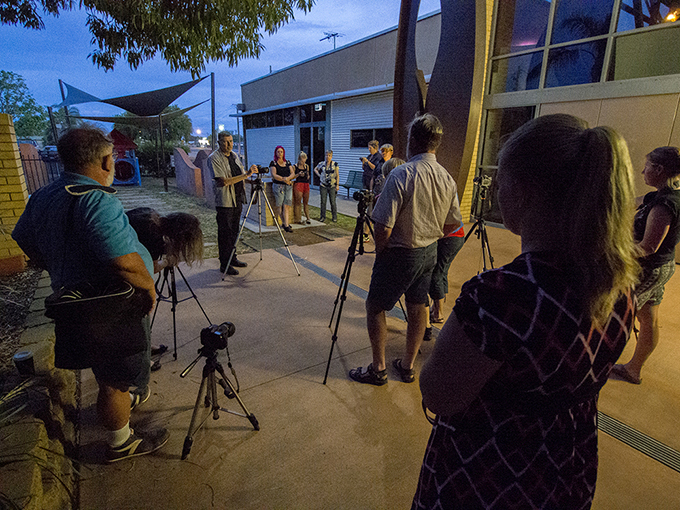
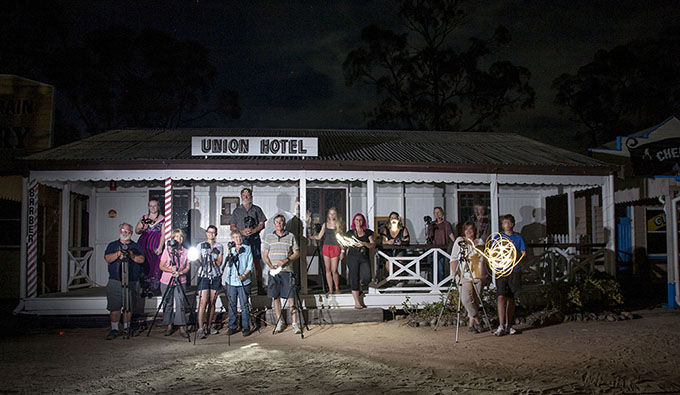



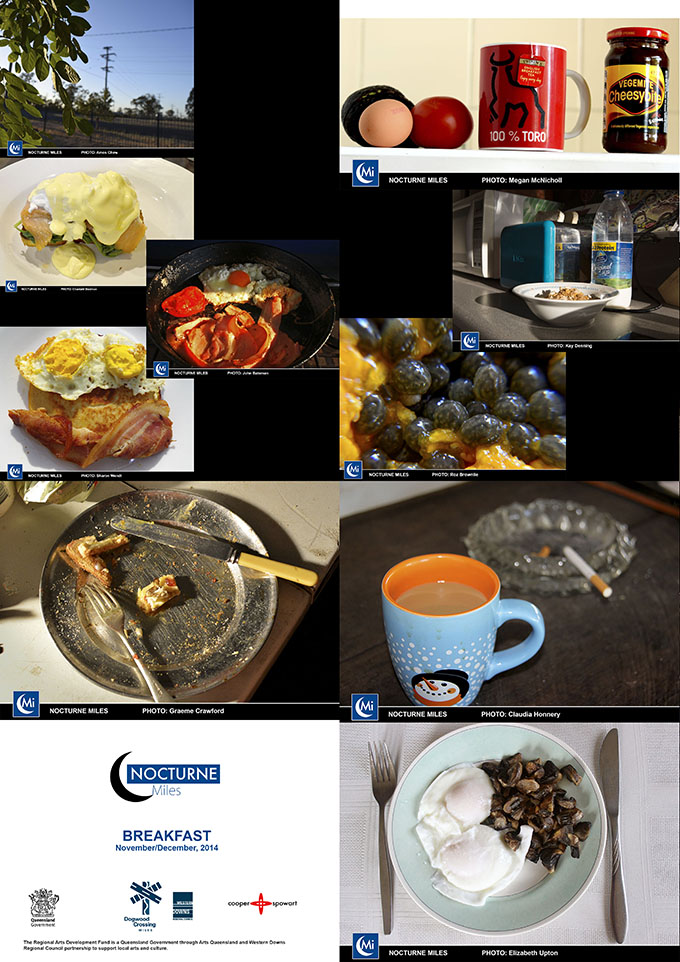
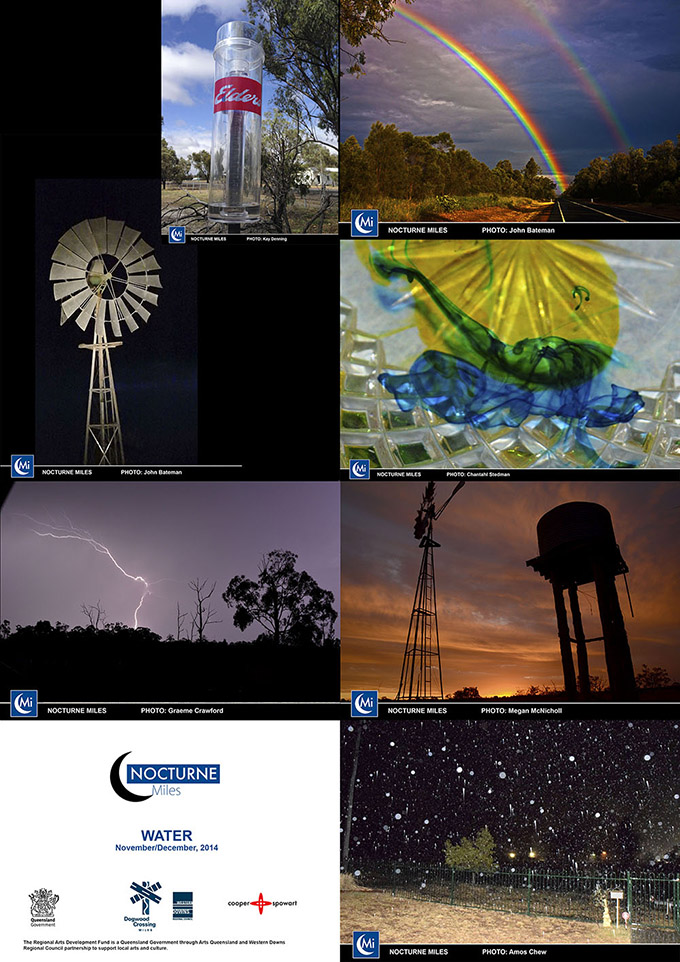


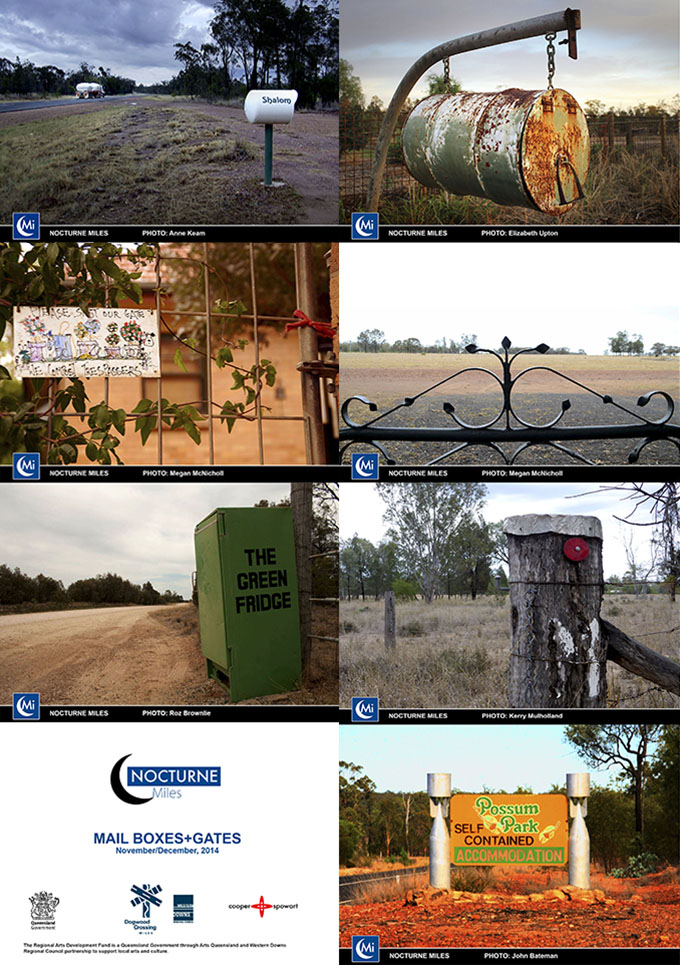
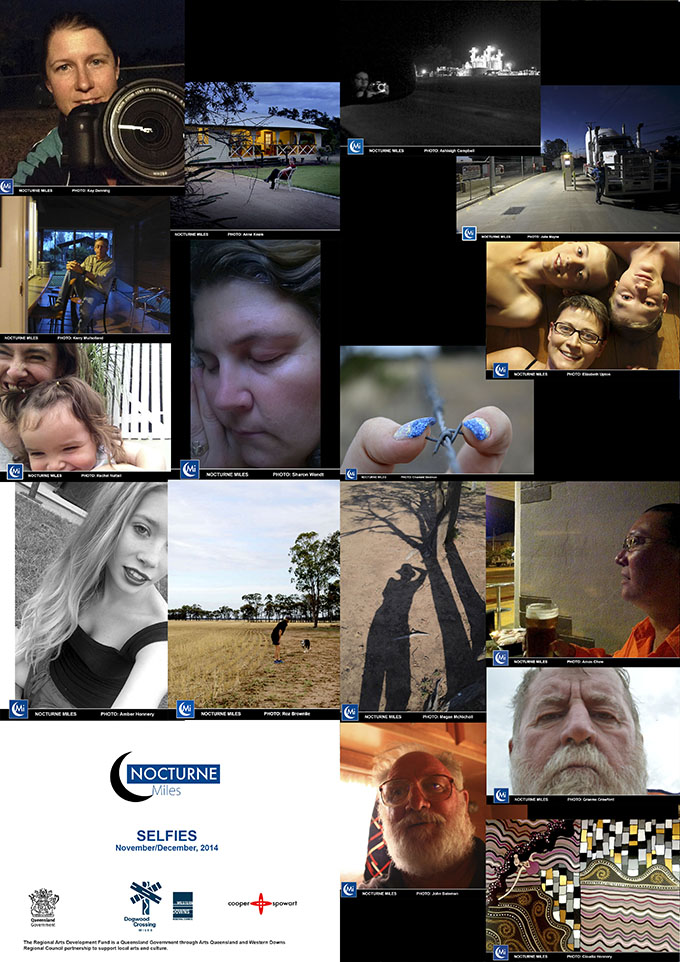
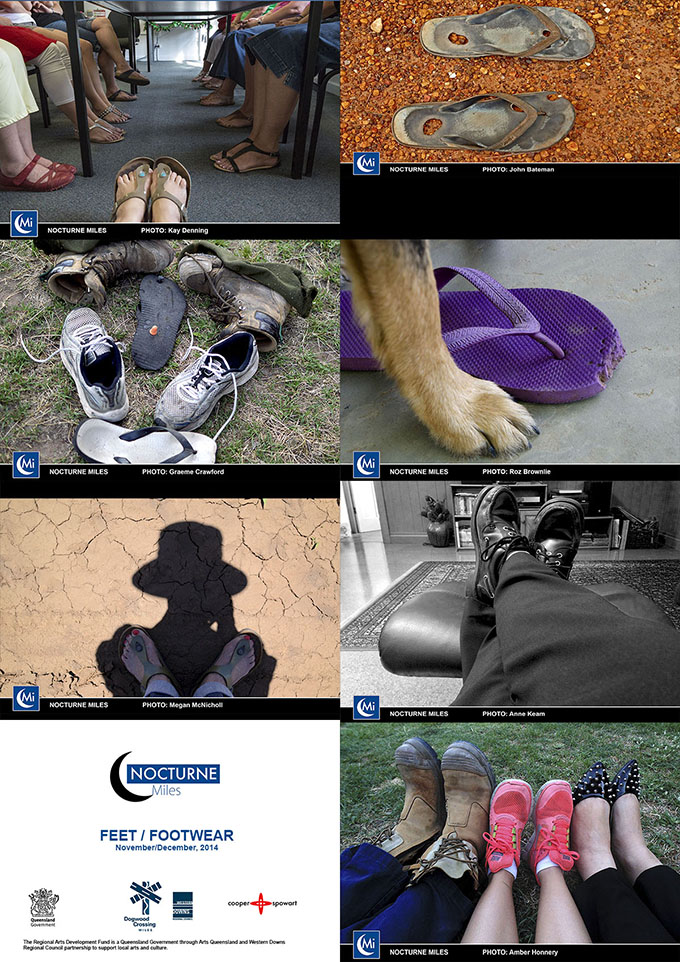
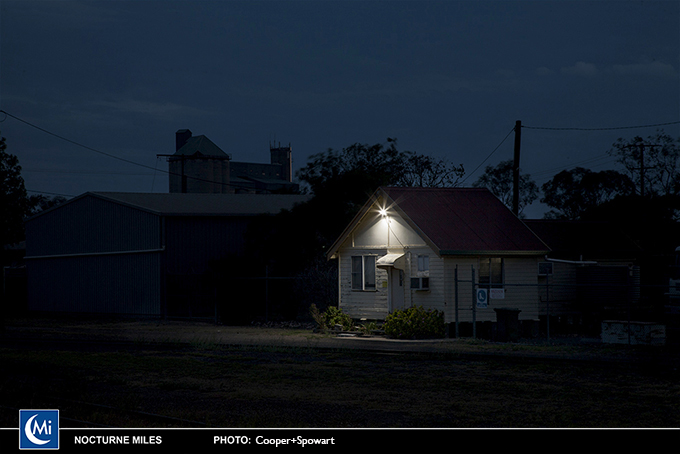
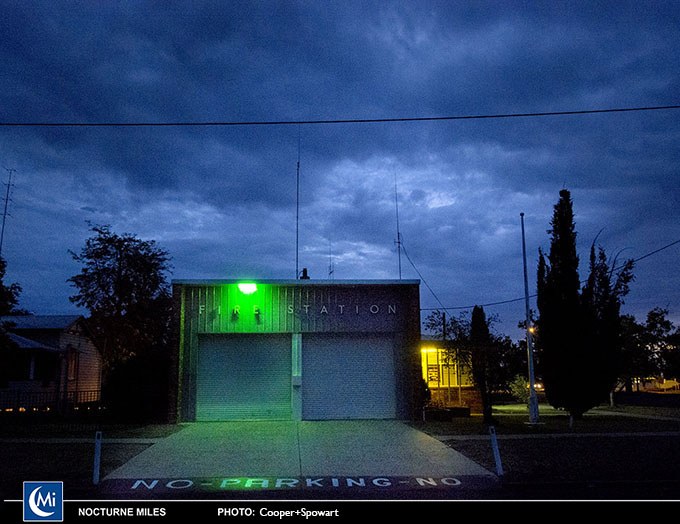
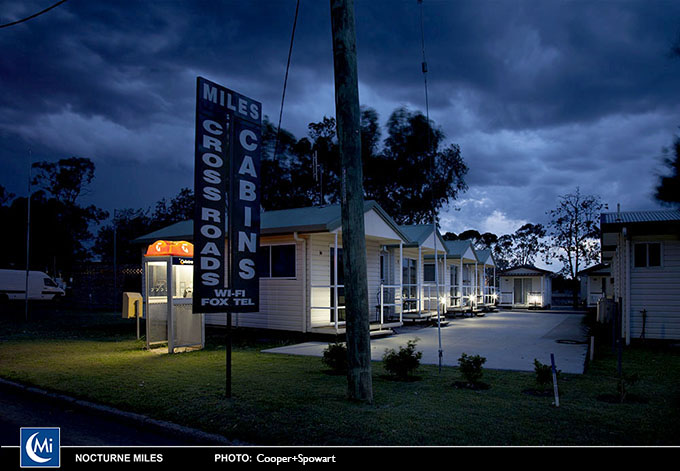
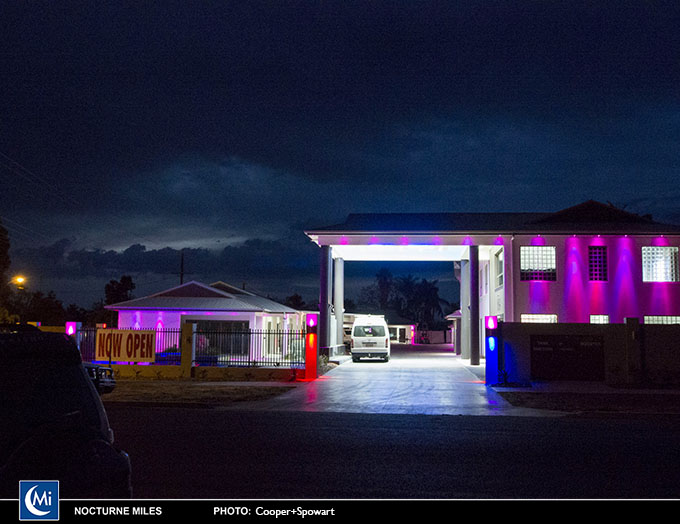

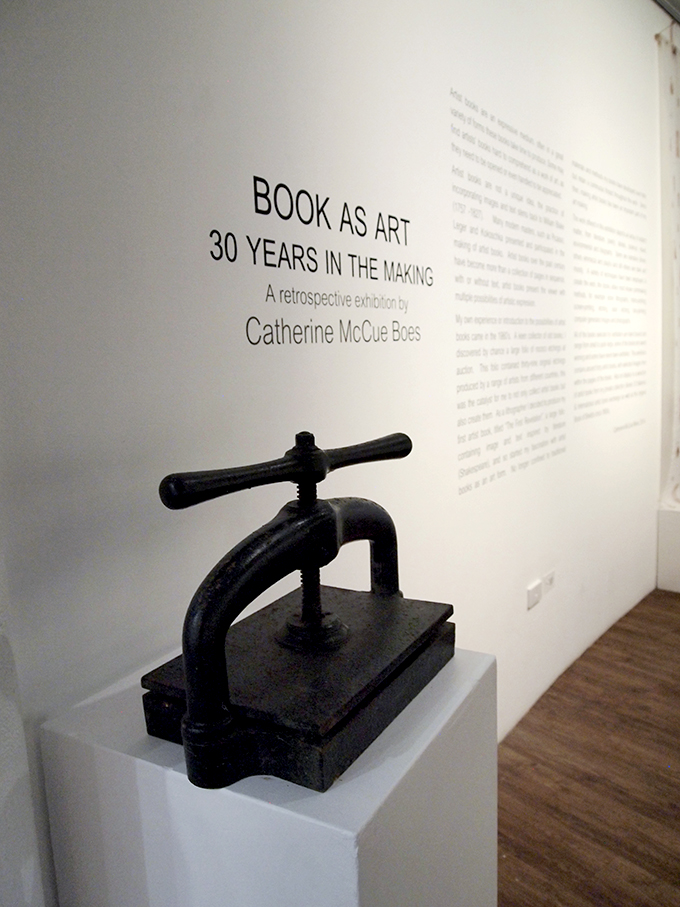
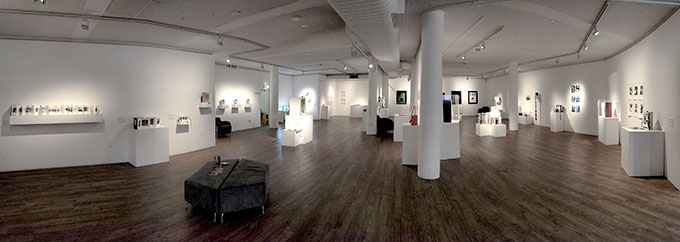

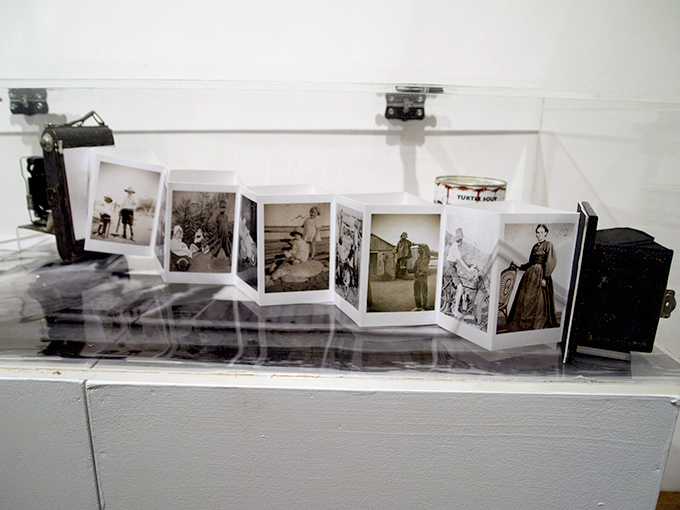
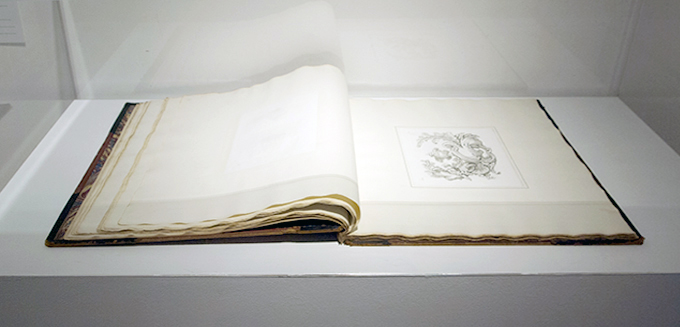
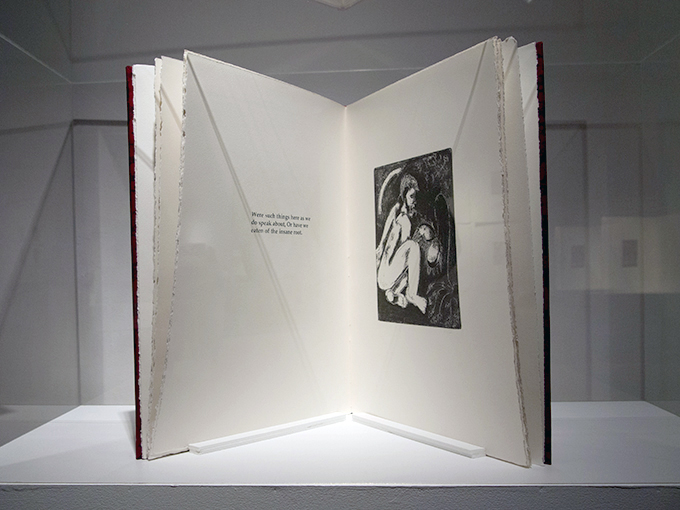
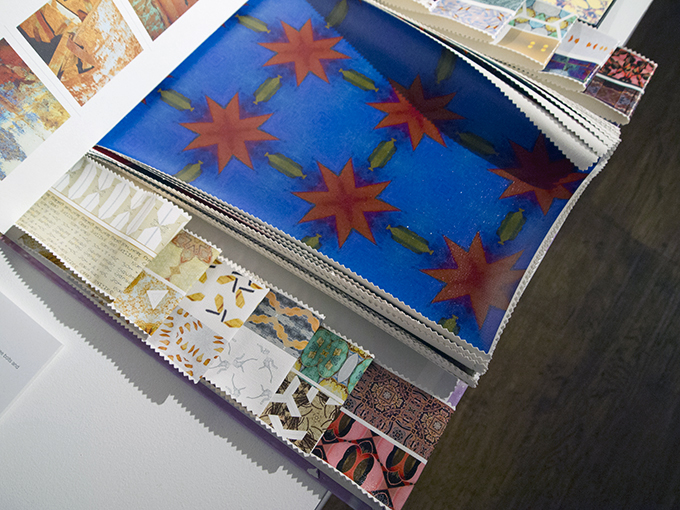

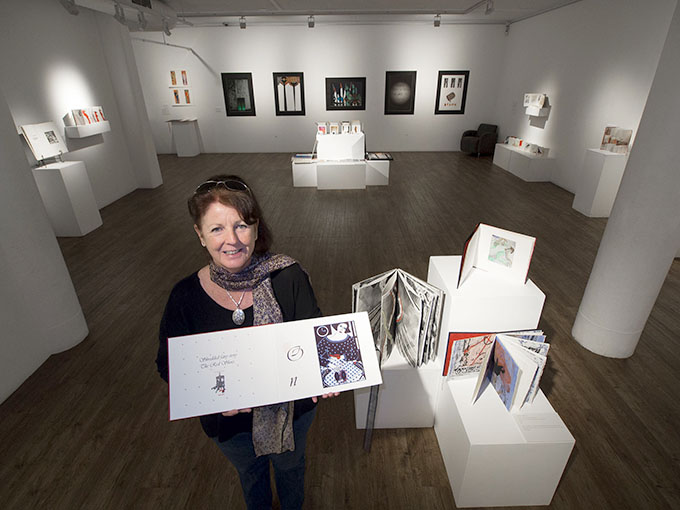
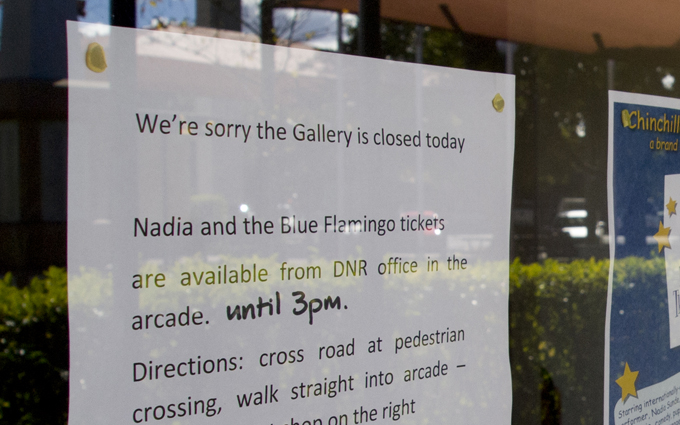
WORKING WITH “ACT WATERWAYS” A community art project
with one comment
ACT Logo
The artists involved in the project had responded to the theme in diverse and inventive ways producing artworks that engaged the public and caused them to consider places and creeks that previously they may have just walked or driven past.
Our task was to manage and coordinate the documentation of the 11 art projects and the Facebook social media. In our activities we closely linked with the project leader, and then President of the Arts Council Toowoomba, Jennifer Wright (Summers), and the design coordinator Mary-Kate Khoo – both energetic, creative artists themselves and hard workers for the artists within our region.
.
Doug in a pre-planning meeting with Jennifer and Mary-Kate
To extend the opportunities for an extended learning experience for media photography students from the TAFE South-West Photoimaging department. We provided them with mentor support and professional practice skills to satisfy the demands of the project through a Facebook closed group as well as face-to-face location work.
The Facebook presence enabled a community connection with the project, activities that were taking place as well as a forum for comments and feedback. While the Facebook page was most active during the event it is still viewable as a record of the event and the creativity of the artists of our region and how the Arts Council Toowoomba provides leadership in arts projects. <https://www.facebook.com/toowoombawaterways>
FROM A PROJECT PRESS RELEASE:
A FLOW OF ART … Artists and water in our community
.
After the floods in 2011 another Arts Council Toowoomba project enabled artists to tell the community’s story. The project was called Splashing back mosaic trail. At the opening Assistant Commissioner Fire and Emergency services Tom Dawson stressed the importance of greater awareness of where and how water flows through Toowoomba.
Now our Arts Council Toowoomba volunteer team and our creative artists have been working hard again and their latest venture, ACT Waterways addresses this aspect of Toowoomba’s water systems. Soon ten artists will be installing works across Toowoomba that tell new stories about our local waterways, with works ready for viewing by 19 September 2014. For those wanting to connect with this exciting and creative project there is a map of the ACT Waterways project and a program of events featuring musical performances at each of the sites.
ACT President Jennifer Wright (Summers) said: ‘We really hope members of the public and visitors enjoy the installations and free events. Working on this project has made us more aware of the wonderful waterways in our city. I was surprised to find yabbies, turtles and waterbirds in the CBD where I am installing bird sculptures.’ Residents and visitors are invited to visit the sites, come to daily performances, and learn about life in our waterways and the history of the Waterbird Habitat.
We invite everyone to share their stories and photos of Toowoomba’s East and West Creeks and to visit the ACT Waterways Facebook page
<https://www.facebook.com/toowoombawaterways>.
.
So, over a two-week period we worked with the artists and students documenting the project and uploading images to the Facebook page and managing the social media aspects of the project. The TAFE students did a fantastic job in taking photographs of the artists and their artworks, and also in complying with the professional demands and workflows that we required for the project.
.
.
WHAT FOLLOWS ARE EXAMPLES OF THE TAFE STUDENTS AND SOME MORE OF OUR PHOTOGRAPHS
.
Share this:
Written by Cooper+Spowart
January 9, 2015 at 11:41 am
Posted in Meeting People, Place-Projects, Regional arts
Tagged with ACT Waterways Project, artists commenting about water and place, Jennifer Wright (Summers), regional artists, Regional arts